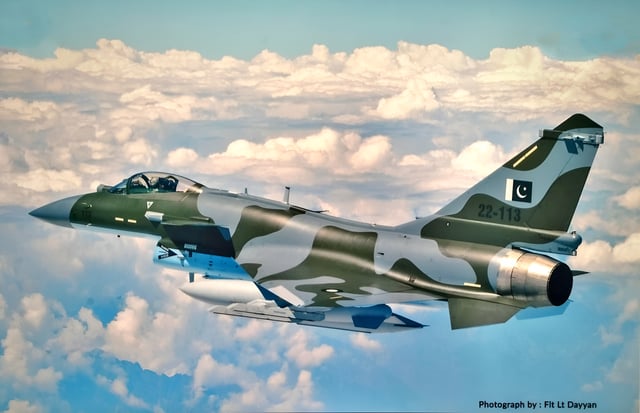LONDON: A recent report by a UK-based news agency has unveiled significant details about a high-stakes aerial confrontation between Pakistan and India on the night of May 7, 2025.
According to the report, the Pakistan Air Force (PAF) successfully downed several Indian Rafale fighter jets.
The engagement reportedly took place after Indian aircraft appeared on PAF radars, prompting swift orders from Air Chief Marshal Zaheer Ahmed Baber Sidhu to deploy J-10C fighter jets. The Pakistani jets, equipped with Chinese-made PL-15 missiles, engaged the Indian aircraft from a distance of approximately 200 kilometers. Indian pilots, unaware they were within missile range, were caught off guard.
The report highlights that Pakistan employed an integrated multi-domain operation, linking air, land, and space-based sensors to form a synchronized “kill chain.” The J-10C jets operated with their onboard radars switched off, relying instead on real-time targeting data from airborne early warning systems and other sources. This tactic rendered the aircraft effectively invisible to Indian radar systems.
Electronic warfare was reportedly a decisive factor in the confrontation. Pakistan is said to have jammed Indian radar and communication systems, leaving Rafale pilots blind to the unfolding threat. The Indian Air Force had reportedly dispatched 70 aircraft for the mission, while Pakistan responded with a fleet of 110, turning the encounter into a massive aerial showdown.
The report credits Air Chief Marshal Sidhu with personally overseeing the operation. He was said to have spent days inside the PAF’s control center, closely monitoring developments and issuing direct engagement orders during the confrontation.
While the Rafale aircraft themselves were not blamed for the outcome, the report attributes the Indian losses to critical intelligence failures and a misreading of Pakistan’s missile capabilities.
It further notes that India is now seeking to build a network-centric air defense system similar to Pakistan’s, though it faces integration challenges due to its diverse and internationally sourced fleet.


Comments are closed.